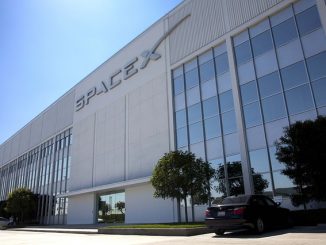— Elon Musk (@elonmusk) September 7, 2024
In a series of revelatory posts on X, Tesla/SpaceX CEO Elon Musk has outlined an ambitious timeline for humanity’s journey to Mars, presenting a vision that could redefine our species’ place in the cosmos. With characteristic boldness, Musk has laid out a roadmap that could see humans setting foot on the Red Planet within just four years, marking the beginning of a new era of space exploration and colonization.
The Mars Timeline: A Step-by-Step Approach
Musk’s plan unfolds in several key stages:
1. 2026: Uncrewed Test Flights
The first Starships bound for Mars are set to launch in two years, coinciding with the next Earth-Mars transfer window. These initial missions will be uncrewed, focusing on testing the spacecraft’s ability to land safely on the Martian surface.
2. 2028: First Crewed Missions
Assuming the success of the uncrewed landings, SpaceX aims to launch the first human missions to Mars in just four years. This aggressive timeline underscores the company’s confidence in its Starship technology.
3. 2028 Onwards: Exponential Growth
Following the initial crewed missions, Musk envisions a rapid increase in the frequency of flights to Mars, with the ultimate goal of establishing a self-sustaining city on the planet within approximately 20 years.
The Rationale: Ensuring Humanity’s Long-term Survival
Musk’s drive to make humanity a multiplanetary species is rooted in a profound concern for the long-term survival of consciousness. As he puts it, “Being multiplanetary will vastly increase the probable lifespan of consciousness, as we will no longer have all our eggs, literally and metabolically, on one planet.” This perspective frames Mars colonization not just as an adventure or scientific endeavor, but as a crucial step in safeguarding the future of intelligent life.
The Challenge: Economics of Interplanetary Travel
At the heart of SpaceX’s Mars ambitions lies a fundamental economic challenge. Currently, the cost of delivering payload to the Martian surface stands at an astronomical $1 billion per ton. Musk argues that to make a self-sustaining city on Mars viable, this cost needs to be reduced to $100,000 per ton—a 10,000-fold improvement in technology and efficiency.
While acknowledging the immense difficulty of this task, Musk remains characteristically optimistic, stating it’s “[e]xtremely difficult, but not impossible.”
SpaceX’s Track Record: Reusability as a Game-Changer
SpaceX’s confidence in achieving these ambitious goals is bolstered by its track record of innovation. The company has already revolutionized space travel by creating the first fully reusable rocket stage and, crucially, making reuse economically viable. This breakthrough in reusability has dramatically reduced the cost of access to space, setting the stage for more ambitious endeavors like Mars colonization.
The Road Ahead: Challenges and Considerations
While Musk’s vision is undoubtedly inspiring, it’s important to consider the numerous challenges that lie ahead:
1. Technological Hurdles: Developing reliable life support systems, radiation protection, and sustainable habitats for Mars will require significant advancements.
2. Physiological and Psychological Impacts: Long-term space travel and living on Mars will pose unprecedented challenges to human health and psychology.
3. Ethical and Legal Frameworks: The colonization of Mars will raise complex ethical questions and require new international legal frameworks.
4. Funding and Political Support: Sustaining the enormous investments required for Mars colonization will need ongoing political and public support.
Conclusion: A New Chapter in Human History
Elon Musk and SpaceX’s plans for Mars represent one of the most ambitious endeavors in human history. If successful, these efforts could open up a new frontier for human exploration and settlement, potentially securing the long-term future of our species.
As we stand on the brink of this new era, the coming years will be crucial in determining whether humanity can indeed become a multiplanetary species. With SpaceX leading the charge, the dream of human footprints on Martian soil may be closer to reality than ever before.
- Bulenox: Get 45% to 91% OFF ... Use Discount Code: UNO
- Risk Our Money Not Yours | Get 50% to 90% OFF ... Use Discount Code: MMBVBKSM
Disclaimer: This page contains affiliate links. If you choose to make a purchase after clicking a link, we may receive a commission at no additional cost to you. Thank you for your support!





Leave a Reply